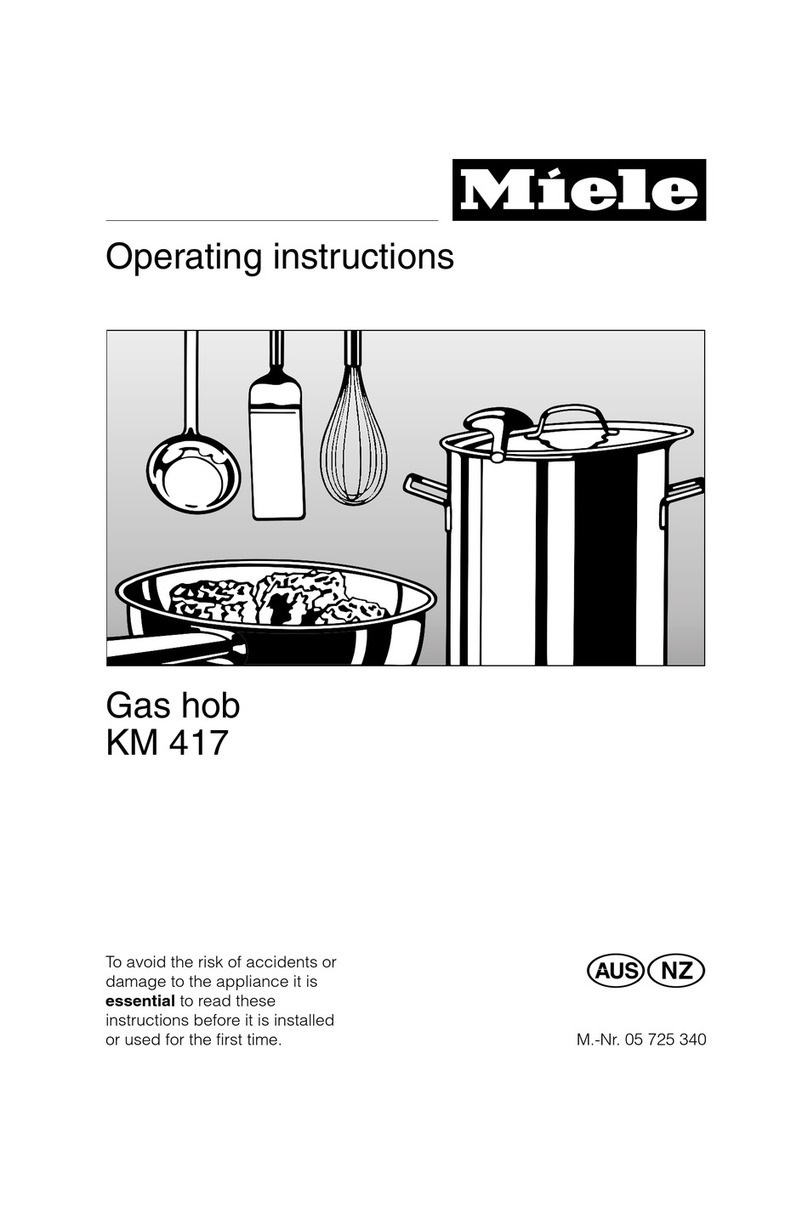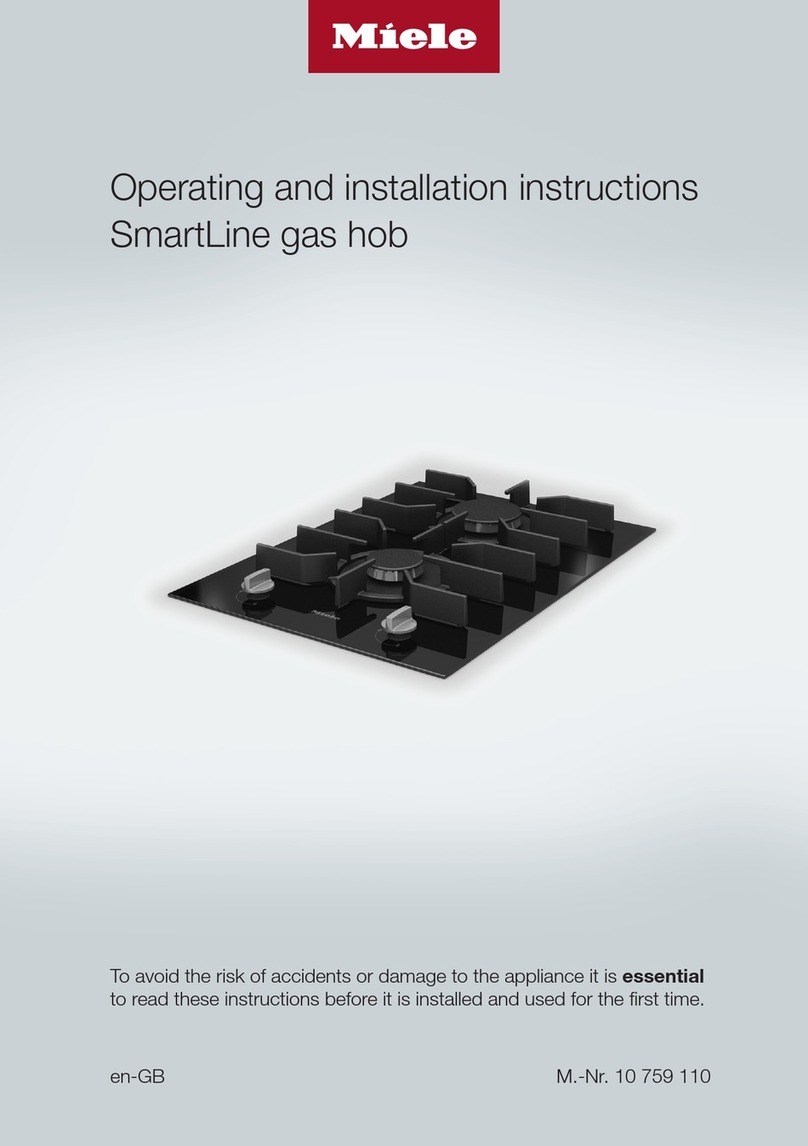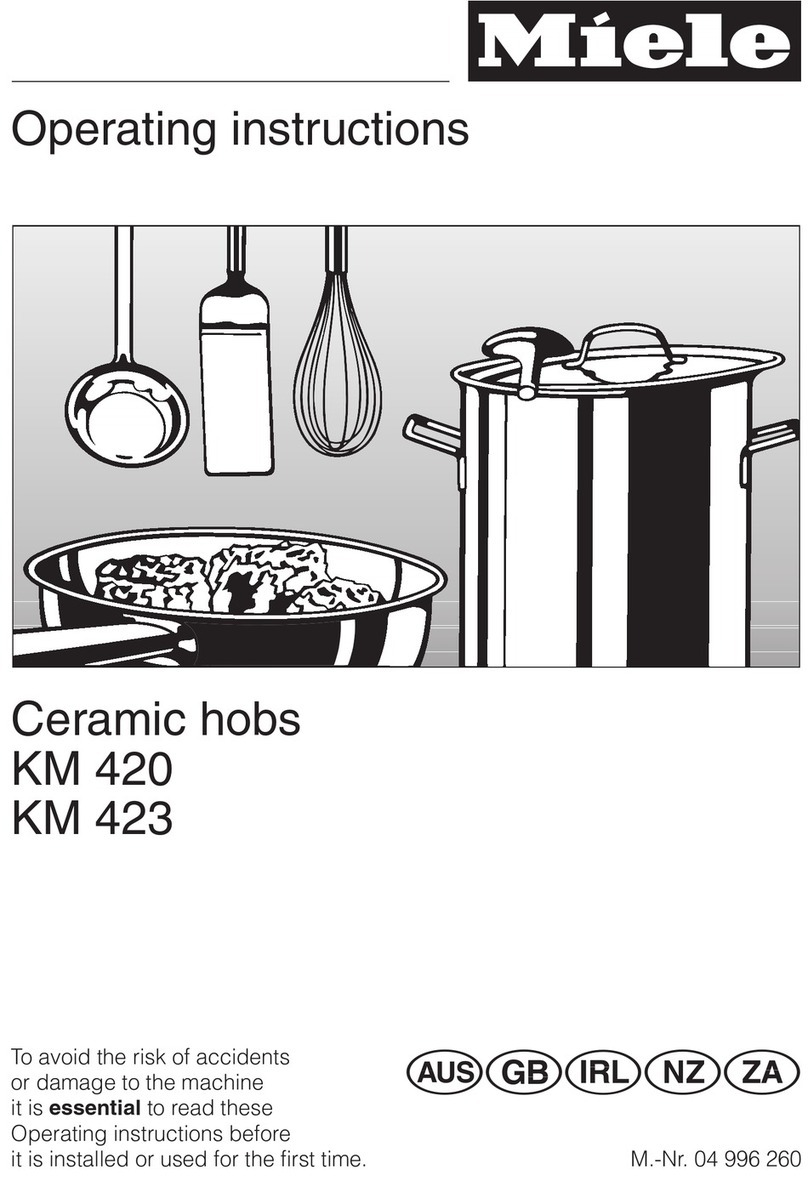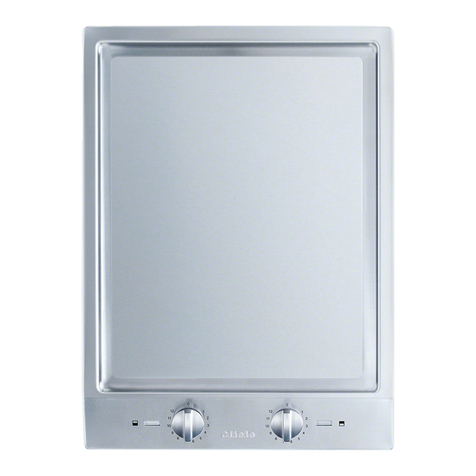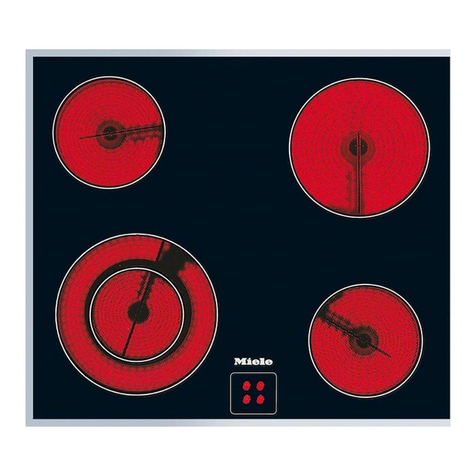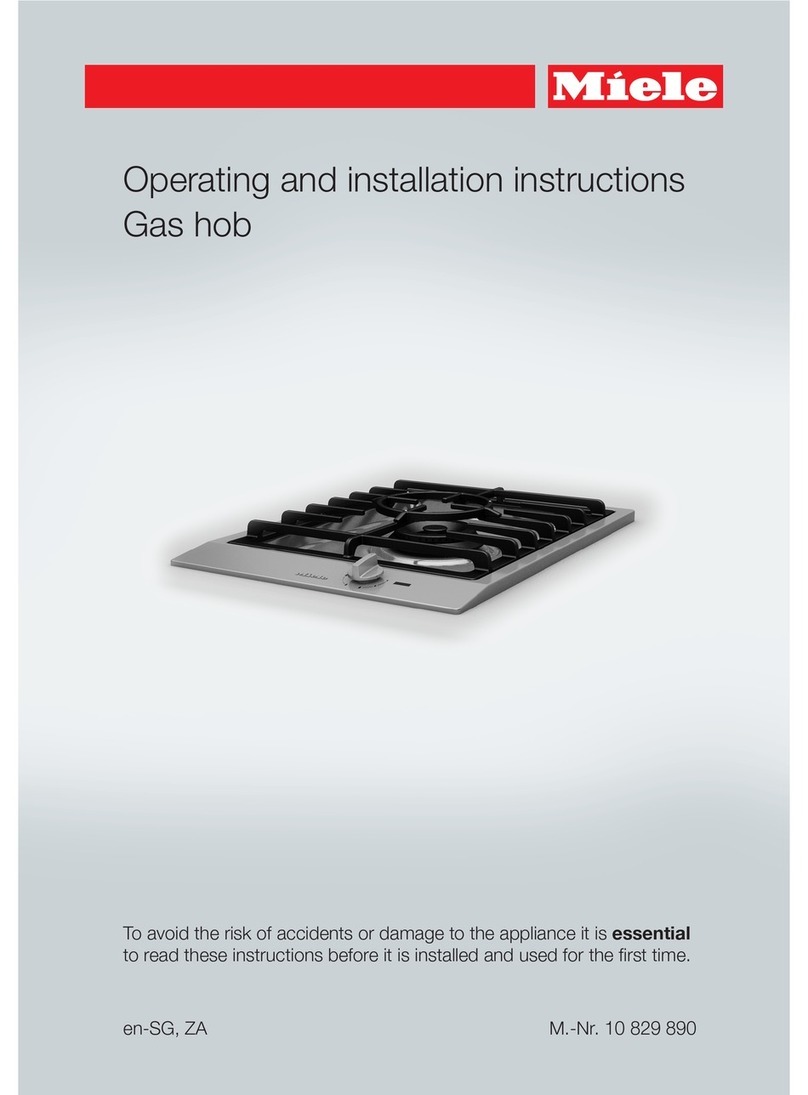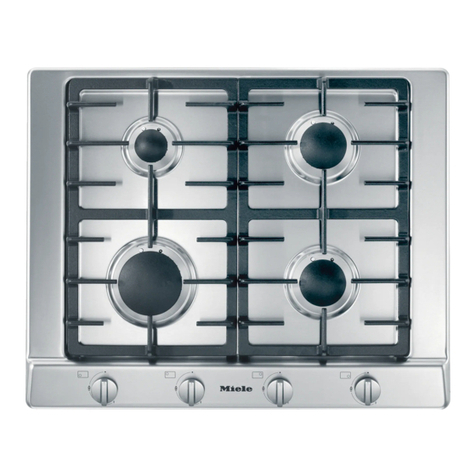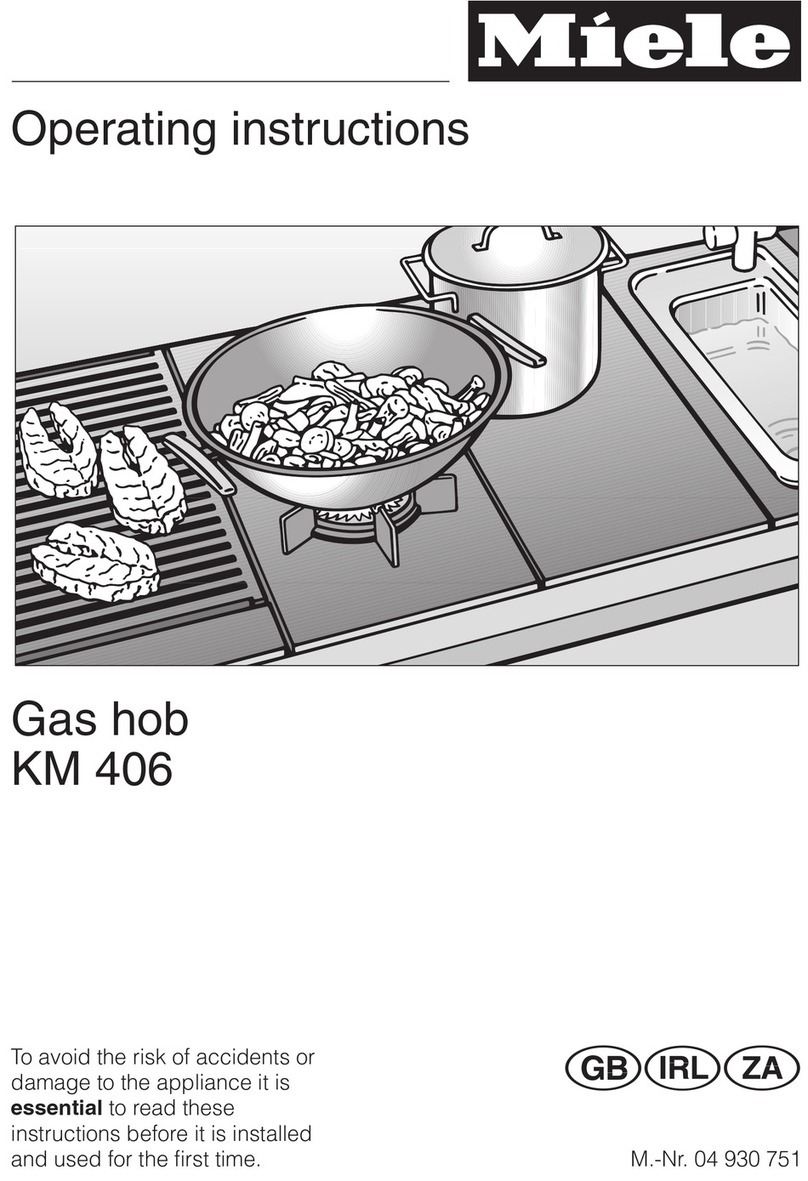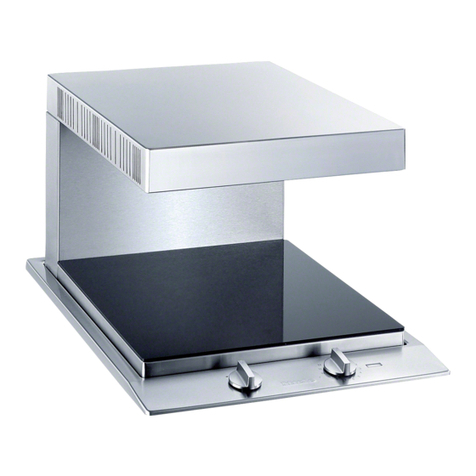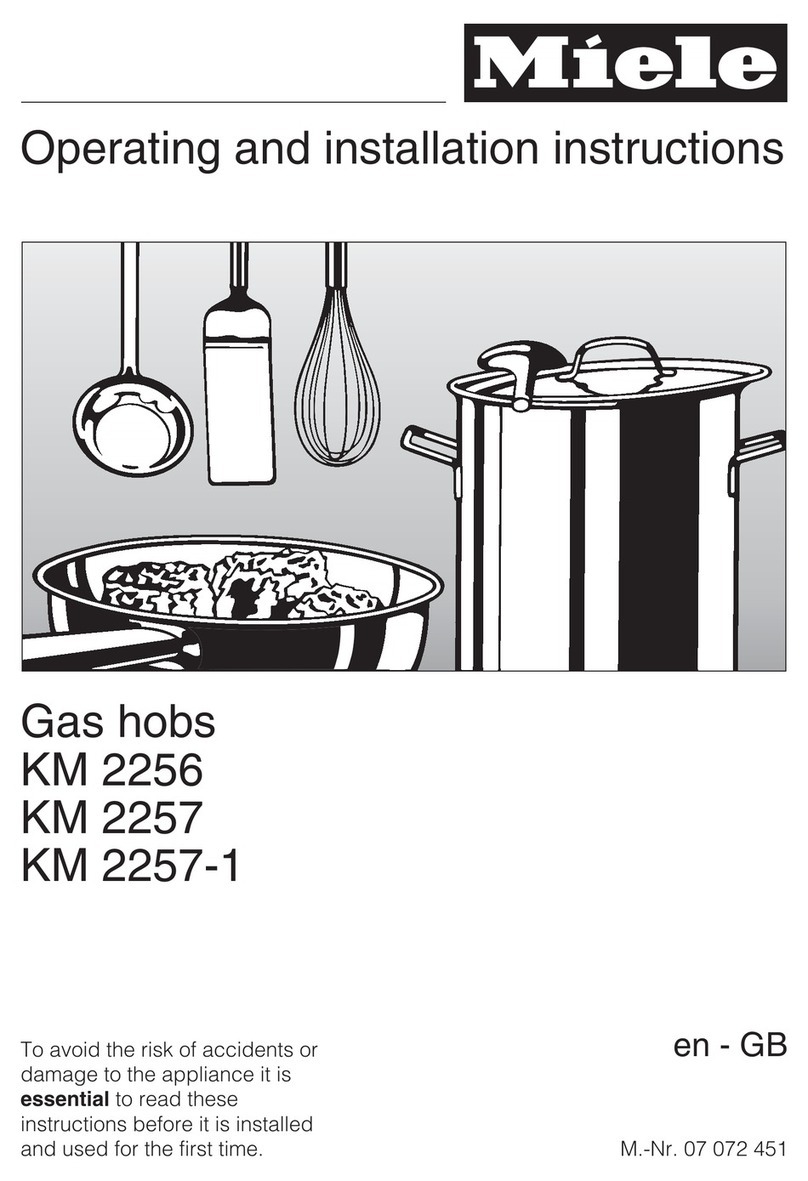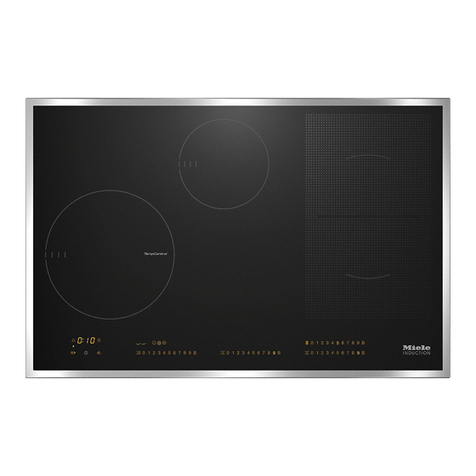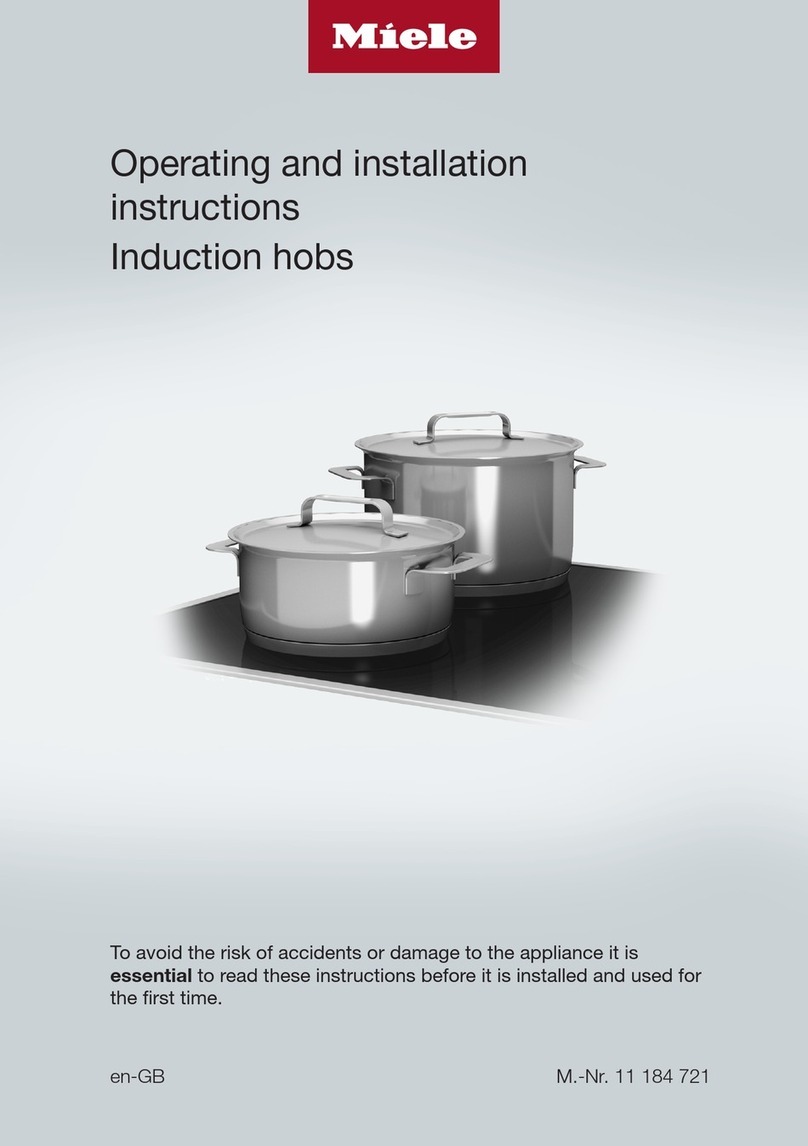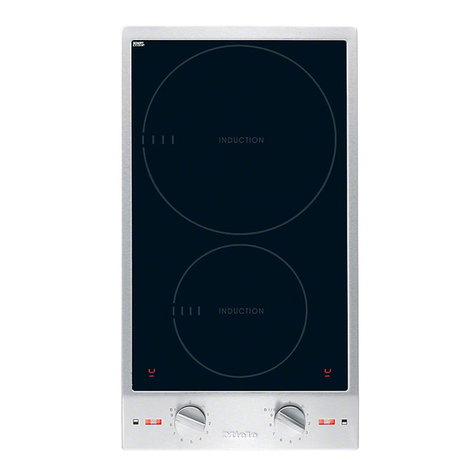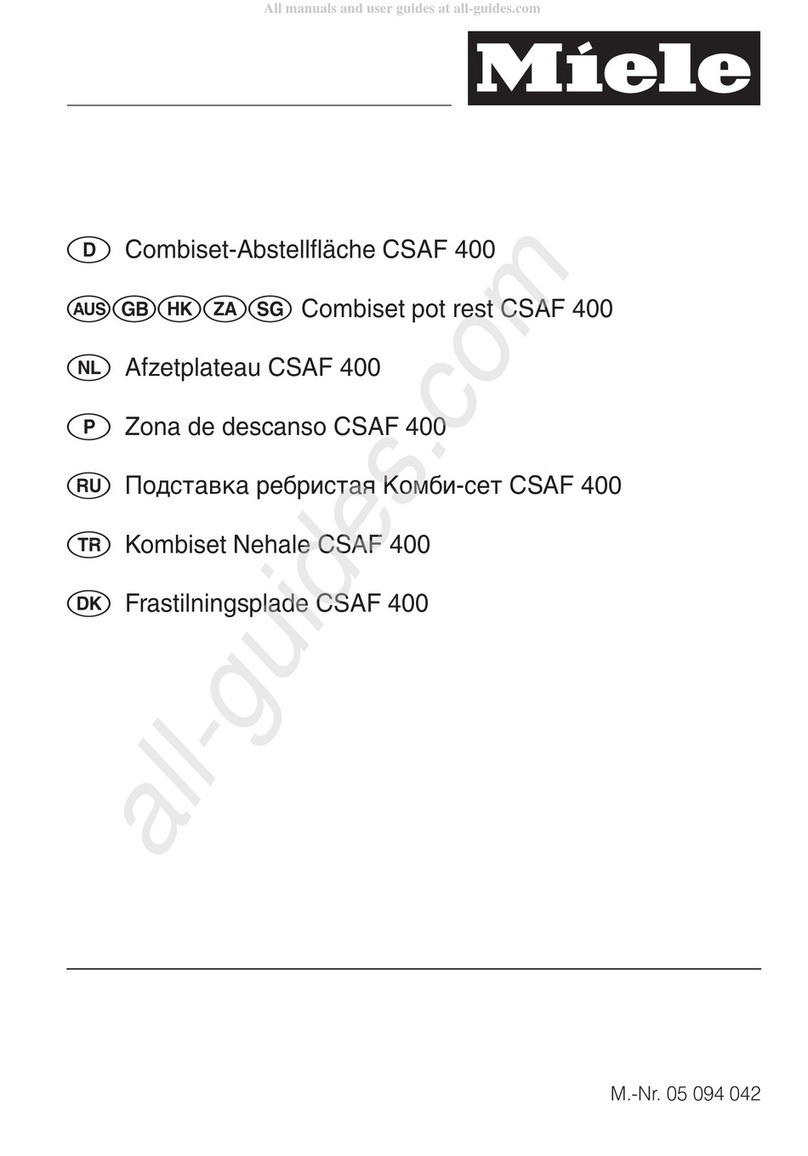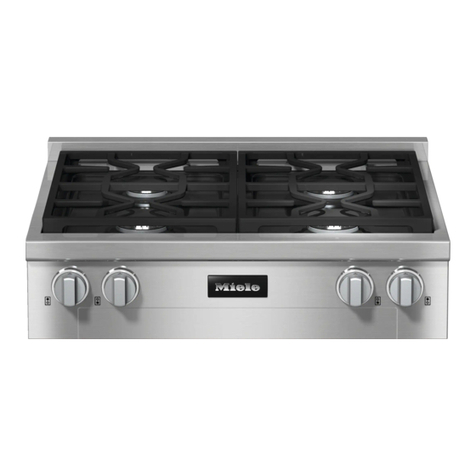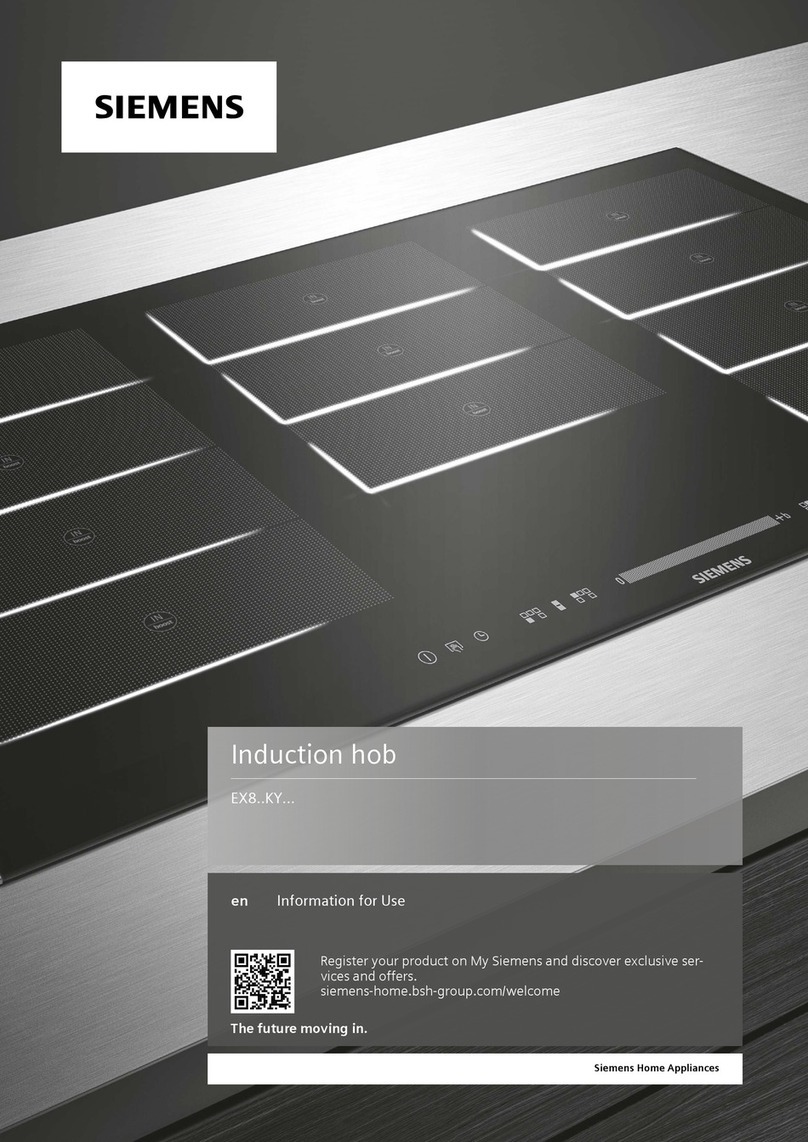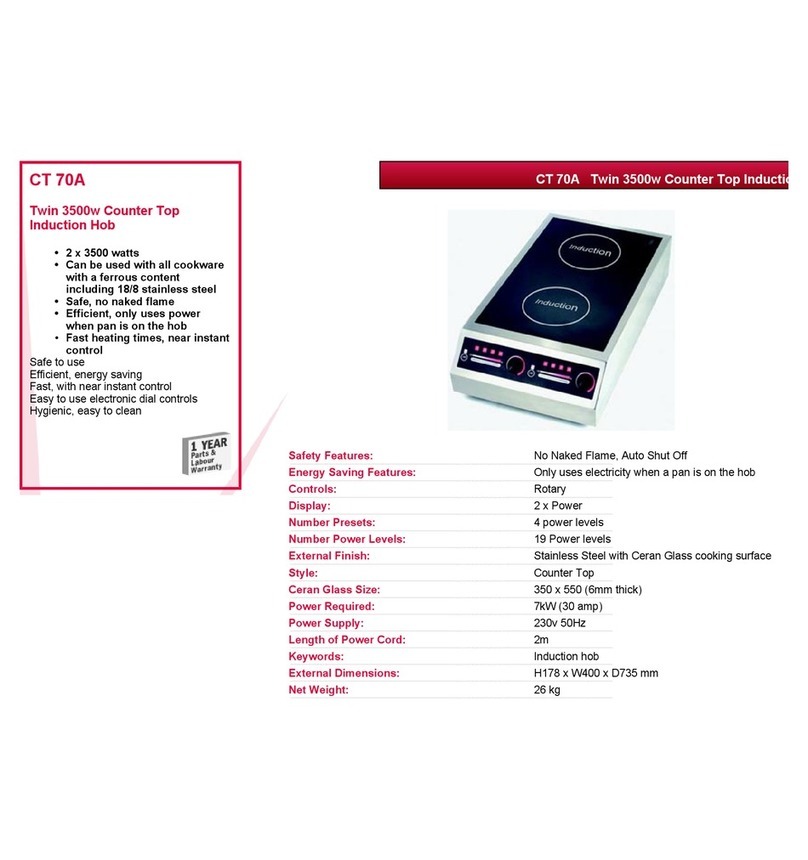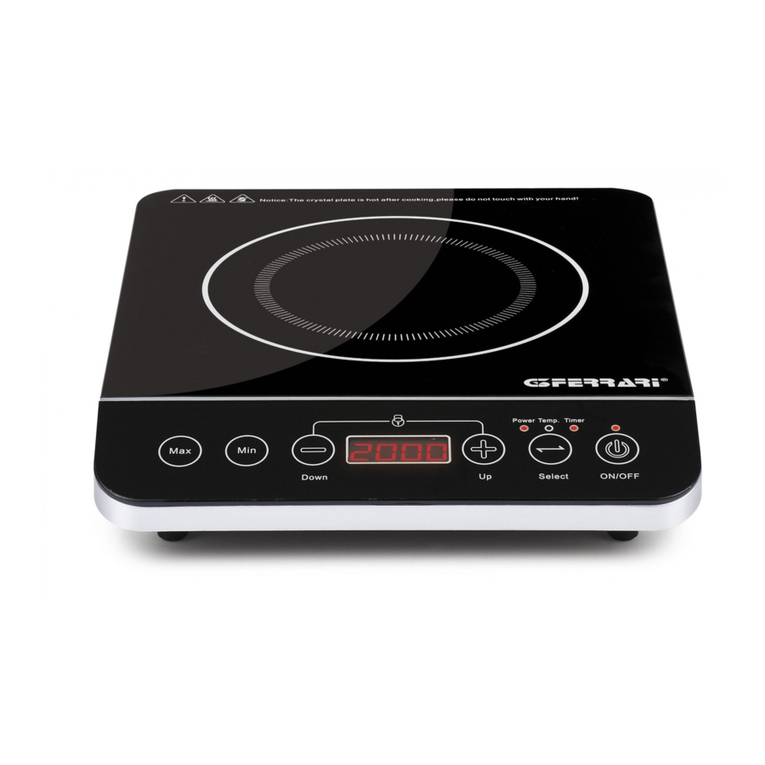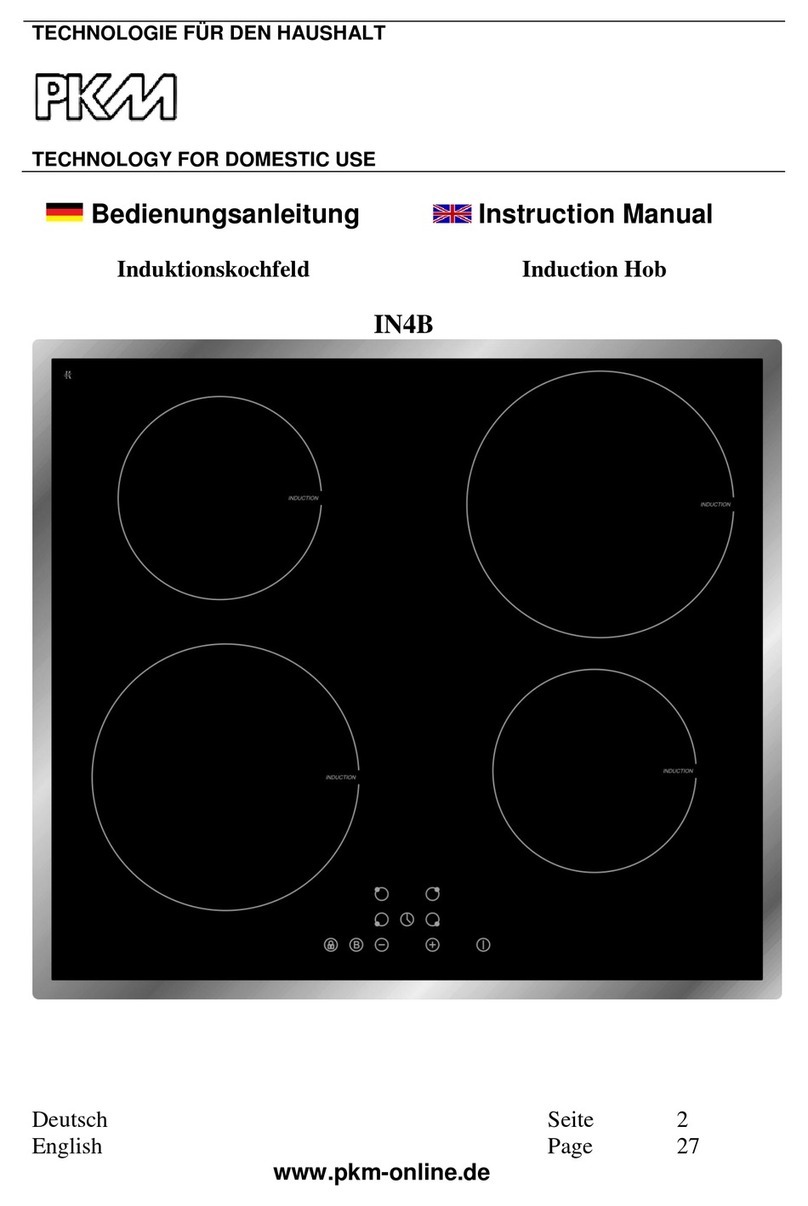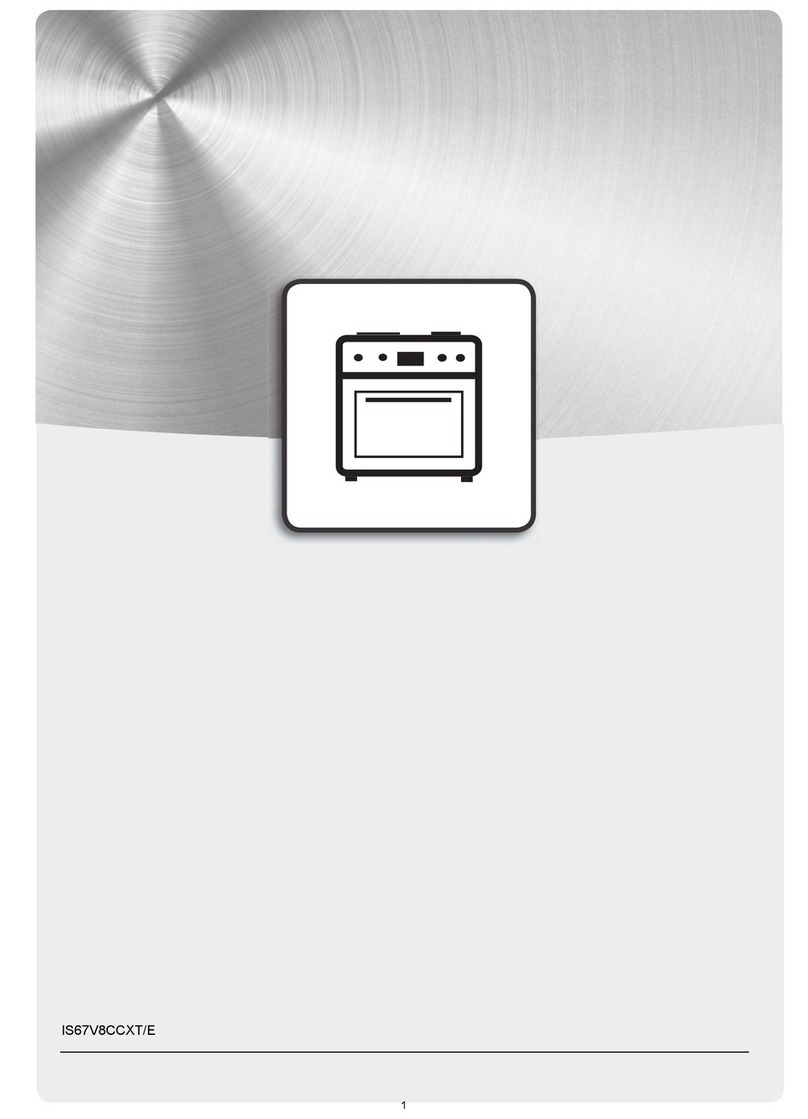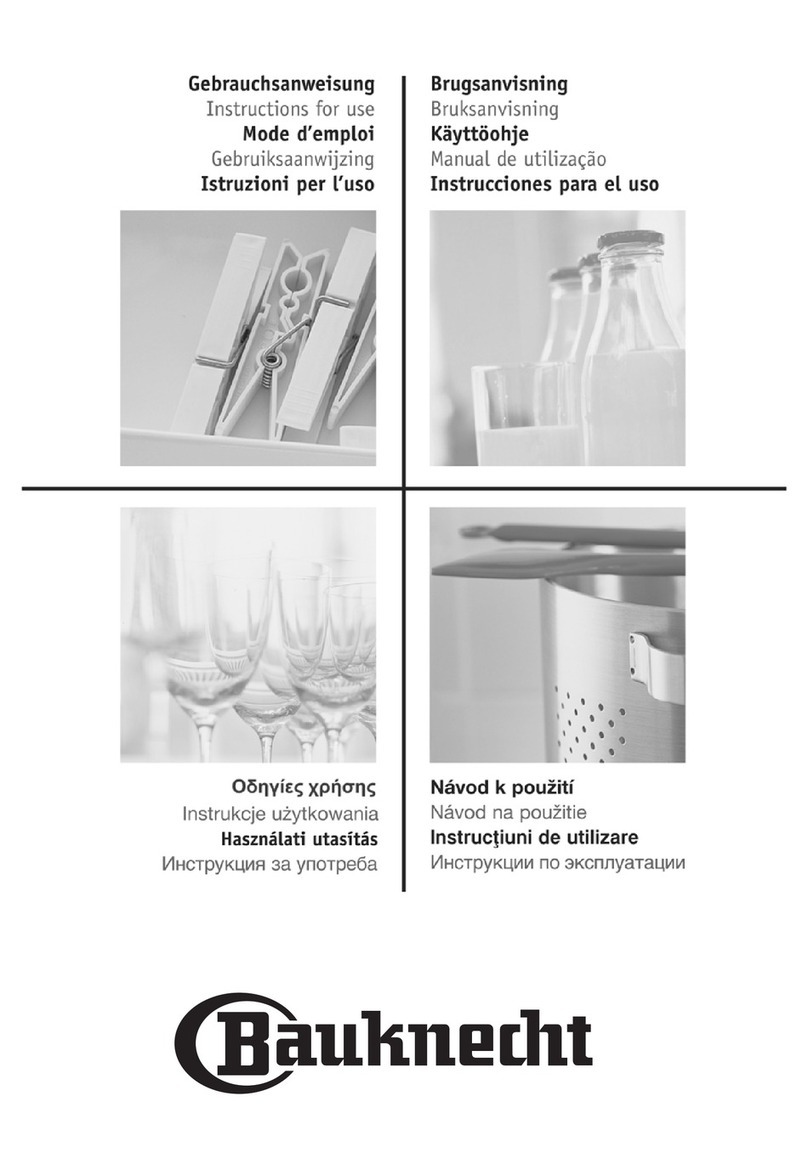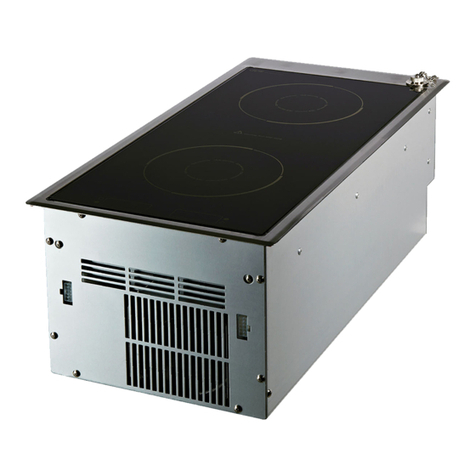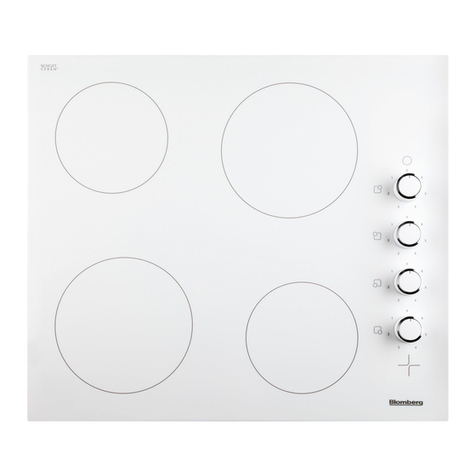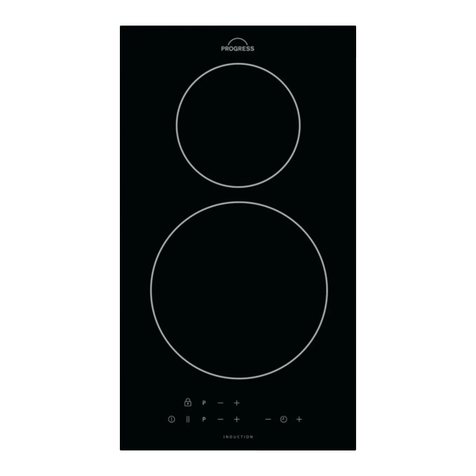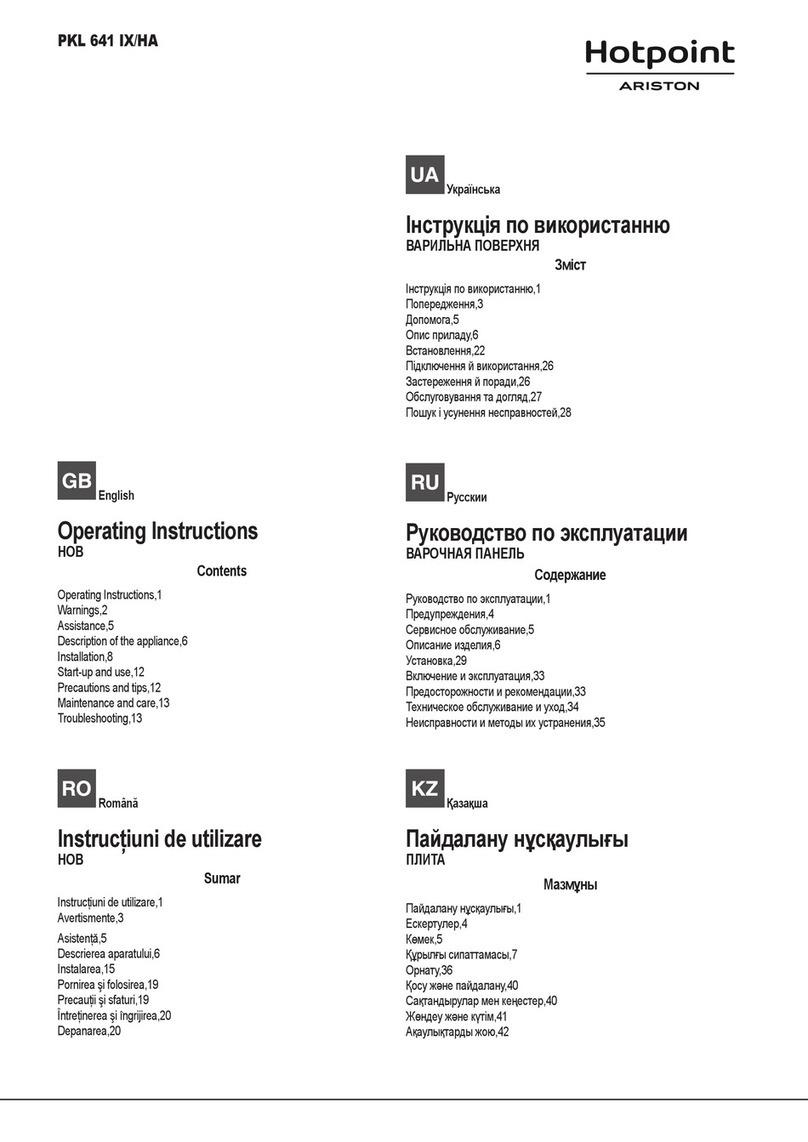~Faulty components must only be
replaced by genuine Miele original
spare parts. The manufacturer can only
guarantee the safety of the appliance
when Miele replacement parts are
used.
~If the connection cable is damaged,
it must be replaced by a suitably
qualified electrician with a specialist
connection cable of type H 05 VV-F
(pvc insulated), available from the Miele
Spare Parts Department.
~Do not connect the appliance to the
mains electricity supply by a
multi-socket adapter or an extension
lead. These do not guarantee the
required safety of the appliance (e.g.
danger of overheating).
~Do not use the hob if it is faulty, or if
the ceramic surface is cracked,
chipped or damaged in any way.
Switch it off immediately, and
disconnect it from the mains electricity
supply. Danger of electric shock.
~In areas which may be subject to
infestation by cockroaches or other
vermin, pay particular attention to
keeping the appliance and its
surroundings in a clean condition at all
times. Any damage caused by
cockroaches or other vermin will not be
covered by the guarantee.
Correct use
~The appliance gets hot when in use
and remains hot for quite a while after
being switched off. There is a danger of
burning until the residual heat
indicators go out.
~Do not leave the appliance
unattended whilst it is in use.
Pans that have boiled dry can cause
damage to the ceramic surface for
which the manufacturer cannot be held
liable.
Boiling fat or oil could ignite and cause
a fire.
~If, despite this, oil or fat does catch
fire, do not attempt to put out the flames
with water. Use a suitable fire blanket,
saucepan lid, damp towel or similar to
smother the flames.
~Do not use the appliance to heat up
the room. Due to the high temperatures
radiated, objects near the appliance
could catch fire. The life of the
appliance could also be reduced.
Warning and Safety instructions
10


